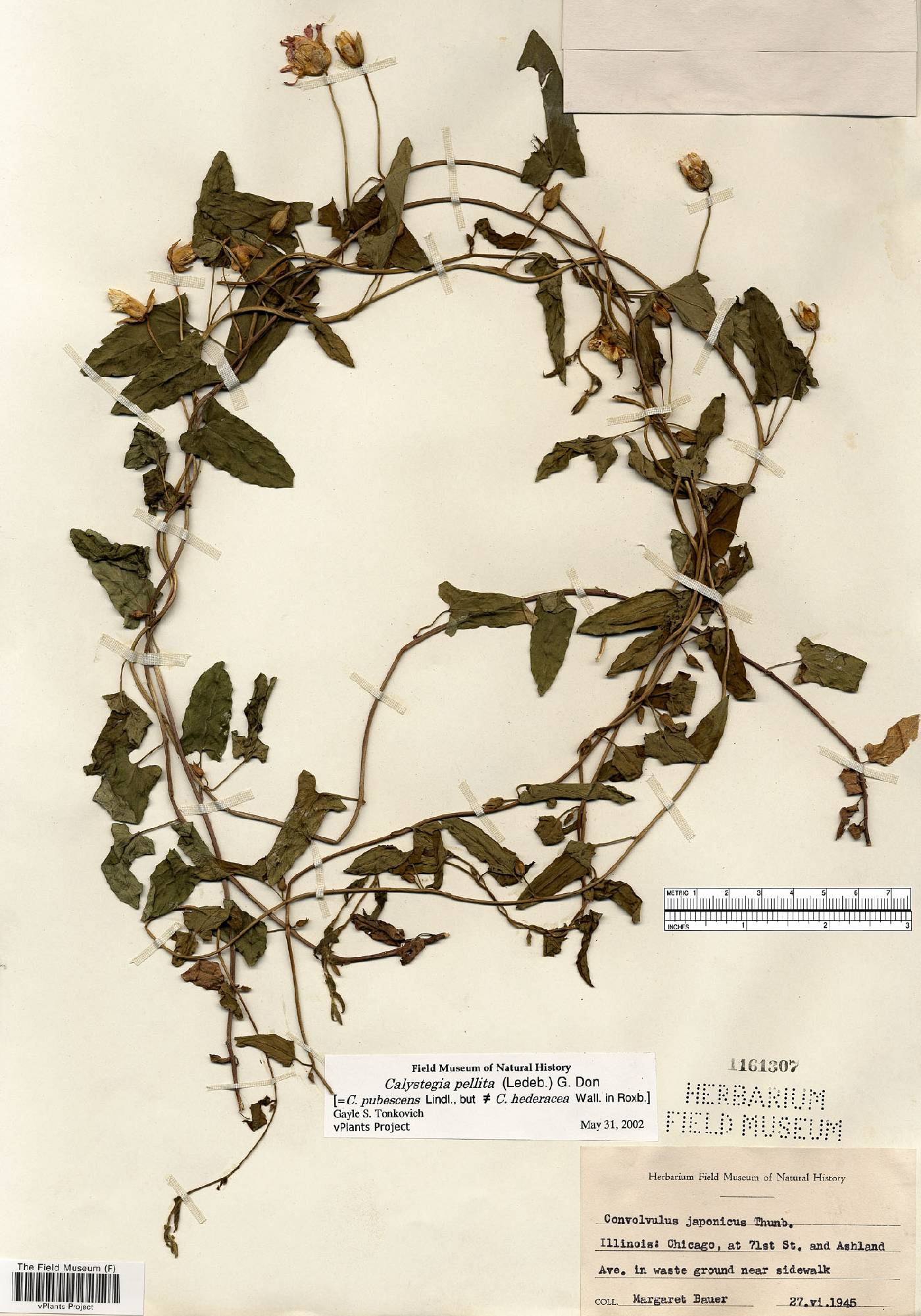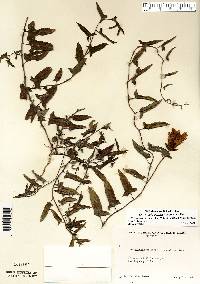Calystegia pellita
|
|
|
|
Family: Convolvulaceae
|
Perennial vine at least 0.5 m long Stem: climbing or trailing, closely soft-hairy, and arising from a rhizome. If the stem is cut or broken, it exudes a milky sap. Leaves: alternate, stalked, non-toothed, firm, soft-hairy, 4 - 8 cm long, longer than wide, arrowhead-shaped with two pointed basal lobes spreading or curved slightly downward. Flowers: several, singly in leaf axils, long-stalked, pink, about 3 cm diameter, 2 - 4 cm long, radially symmetric, somewhat bell-shaped with many petal-like whorls. Each flower is immediately subtended by two, somewhat large (under 1.5 cm long), soft-hairy, non-toothed, fairly egg-shaped bracts which hide the sepals. Sepals: five (but obscured by larger subtending bracts), about 1 cm long, narrowly egg-shaped with abruptly narrowed and pointed tips. Petals: ten (though appearing as more), but fused at least at base in two whorls of five, then separating into relatively narrow, sometimes strap-like, pointed segments. Since this cultivated species has the reproductive parts converted to petal-like segments, there appear to be fifteen to twenty petals per flower. Stamens: none, modified and converted to inner whorls of petals. Pistil: none, modified and converted to inner whorls of petals. Fruit: none. Similar species: Calystegia pellita is unique among Calystegia in the Chicago Region because it has multiple whorls of petals which are not fused their entire length. Our other species are easily discerned by their larger flowers (usually 4 - 7 cm long) with only a single whorl of fused petals, and their typically larger bracts (1.2 - 3 cm long). The name of this species has often been mistakenly applied to the species C. hederacea, but that species has only a single whorl of petals and the plant is hairless. Flowering: June to August Habitat and ecology: Introduced from Asia and sometimes cultivated, but not commonly escaping, and only rarely persisting in waste ground. Occurence in the Chicago region: non-native Notes: This species has often been confused with another closely related and less commonly cultivated species, Calystegia hederacea. For clarification on the nomenclature and further differences of the two species see Demissew and Brummitt (1997). Etymology: Calystegia is a combination of the Greek word kalyx meaning the whorl of sepals (calyx) of a flower, and stegon, meaning cover; together referring to the bracts that conceal the calyx. Pellita means "clothed with a hairy skin", in reference to the stem, leaves, and bracts being covered with close, soft hairs. Author: The Field Museum |


